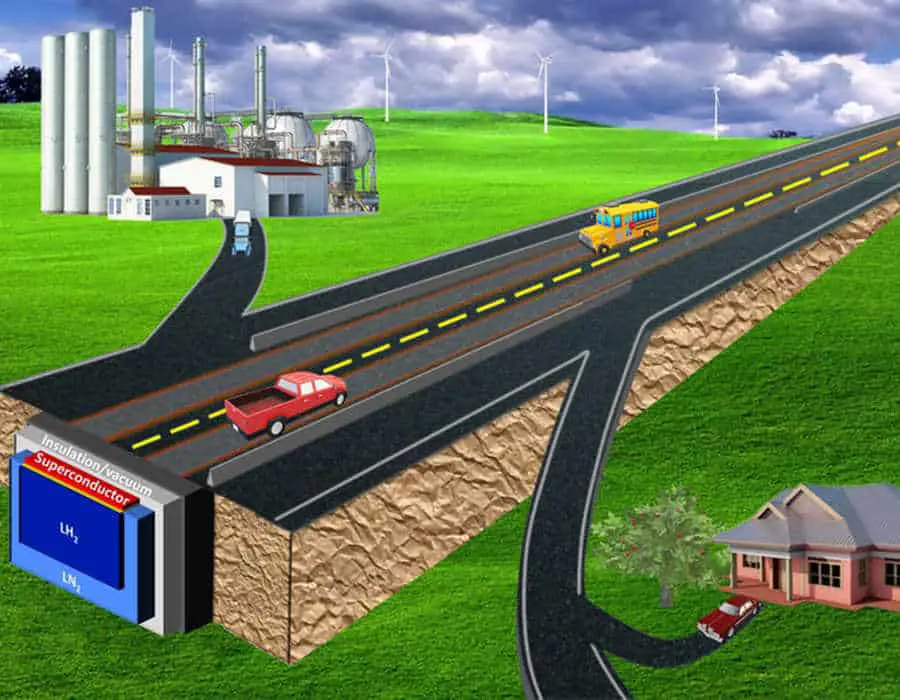A breakthrough design could combine superconducting levitation, lossless electricity transmission, and liquid hydrogen transport into a single system.
Superconductors can conduct electricity without resistance or loss of power, and levitate magnets above them effortlessly. These properties would make superconductors useful for high-speed trains or for transporting electricity over long distances, except for one glaring problem: superconductors only work at low temperatures, above a hundred degrees. below zero.
This requirement alone makes building a power grid or a high-speed rail network very expensive. Unless a superconducting network can accomplish these two tasks at the same time.
In APL Energypublished by AIP Publishing, researchers from the University of Houston, Adelwitz Technologiezentrum GmbH and the Leibniz Institute for Solid State and Materials Research have developed a concept for a superconducting highway that could carry vehicles and electricity, by cooling the necessary superconductors using a liquid hydrogen pipeline.
In most magnetic levitation designs, the superconductor is inside the vehicle, which is suspended above a magnetic track. The authors decided to reverse this arrangement, placing the superconductor on the ground and equipping each vehicle with a magnet. The result is a multi-use system that is still affordable.
“Superconducting magnetic levitation vehicles, rather than superconducting magnet levitation vehicles, can provide additional benefits such as transmission and storage of electrical energy“, said the author Zhifeng Ren. “We have developed a new superconducting system capable of transporting and storing an enormous amount of energy, as well as transporting people and goods at a speed of at least 400 miles per hour (or 640 km/h)“
Their design solves the problem of cooling superconductors through a liquid hydrogen pipeline. Hydrogen is a promising clean fuel source that is complex to handle: It is a gas at room temperature, so transporting and storing it involves either dangerous pressurized tanks or expensive cryogenic temperatures. In the team’s proposal, the cost of cooling the superconductor and the cost of transporting the hydrogen are identical.
Using a scale model in the lab, they demonstrated that these applications can co-exist, and they now hope to demonstrate this on a large scale. The authors envision placing their system under existing highways to utilize current infrastructure.
“People can use the Superconducting Highway at any time without waiting for a train or plane, and modifying existing highways means there is no need to acquire land for tracks.“, Mr. Ren said. “With sufficient financial support, we could set up a functioning system over a relatively short distance, for example from Houston to Austin.”
Legend : Schematic illustration of superconducting highway for transporting and storing energy and superconducting levitation for transporting people and goods. Credit / Vakaliuk et al.
The article “A multifunctional highway system incorporating superconductor levitated vehicles and liquefied hydrogen” is written by Oleksii Vakaliuk, Shaowei Song, Uta Floegel-Delor, Frank N. Werfel, Kornelius Nielsch and Zhifeng Ren. It will appear in APL Energy on April 24, 2023 (DOI: 10.1063/5.0139834). After this date, it will be accessible at the following address: https://aip.scitation.org/doi/10.1063/5.0139834.
[ Communiqué ]
2023-05-02 06:05:15
#magnetic #vehicles #superconductor #levitation #Enerzin

